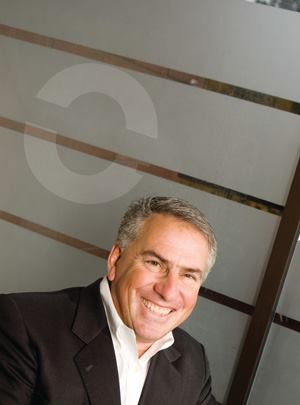“We got five years of interest only on a seven-year deal with debt in the mid-5 percents for the Austin deal,” says David M. Frieze, director of multifamily acquisitions for Northland. “We’re excited about Austin, and the debt made it attractive.”
The acquisition not only upped Northland’s unit count but also added quality to its portfolio. “These are core assets in infill locations,” says Ron Halpern, managing director for the Boston office of CBRE and Melody/Capital Markets, a Los Angeles-based lender that handled the deal’s financing. “It was an opportunity to expand their portfolio in Austin.”
On August 25, 2008 (not quite a full year since Rosenthal had come on board), Northland announced the Equity deal, billed as the largest apartment deal in Austin’s history. At the end of the statement, Northland announced that in the past 12 months, the company had completed 24 acquisitions totaling 5,906 units. The hefty growth has some concerned. “I think the only negative would be whether or not they can digest their growth,” Menna says.
A valid point, considering that those numbers are likely to grow. The cash-backed company still has about $10 million to $15 million left in its first fund; $130 million in its second fund; a $70 million unsecured revolving line of credit; and $276 million in its Northland Portfolio, a consolidation of past partnerships . Rosenthal says the high rate of expansion isn’t a concern. “Integration fails when there isn’t a focus on people,” he says. “Management function is only as good as the people you have. We care a lot about people and creating a culture that celebrates that.”
And don’t forget that the acquisition strategy is a long-term one. As of November, Northland’s 16,671-unit multifamily portfolio is 75 percent of the company’s collective holdings.
While Northland executives say they don’t really have a “magic number” as far as unit counts go, Gottesdiener admits that it would serve the company well to have more than 20,000 units. “We don’t have any specific target, but we do find it beneficial to have certain scale,” he says. “Mainly, we just want to grow where we are, if we can. Some kind of scale of 20,000 units to 30,000 units will help us continue to provide the best training, the best software, and be able to amortize over our portfolio of scale.”
2009 AND BEYOND
There were many reasons for Northland’s rapid growth in the past 12 months. For a company that considers itself opportunistic, the primary driver is, of course, opportunity—but only in a sector it likes. And that’s not all. You can’t discount Rosenthal’s influence, the disappearance of many of its key competitors, or the firm’s flexibility.
“Northland’s funds don’t have specific end time frames,” Gnazzo says. “For some of the public money or institutional money funds, you’ve got to get in there and buy something that has a quick pop to it. In 2007 and 2008, they’re able to buy things because someone else may not see the appropriate return in three years. They can look at it in five to 10 years and sit and be patient. That will allow them to scoop up a lot of deals.”
Though the Wall Street meltdown and continuing capital crunch haven’t helped bring buyers and sellers together, Rosenthal and Gottesdiener expect to see more deals come through the pipeline next year. And those deals could look a lot more like the Tarragon transaction than the Equity deals. If a buyer leveraged more than 25 percent of their deals and values fall an additional 15 percent to 25 percent, Gottesdiener expects to see lower B and C class products in second- and third-tier markets end up with the banks. “There is going to be a lot of lender-owned product,” Frieze says. “We’re trying to look at buying notes and create relationships with the people who will own real estate before they end up in broker’s hands.”
